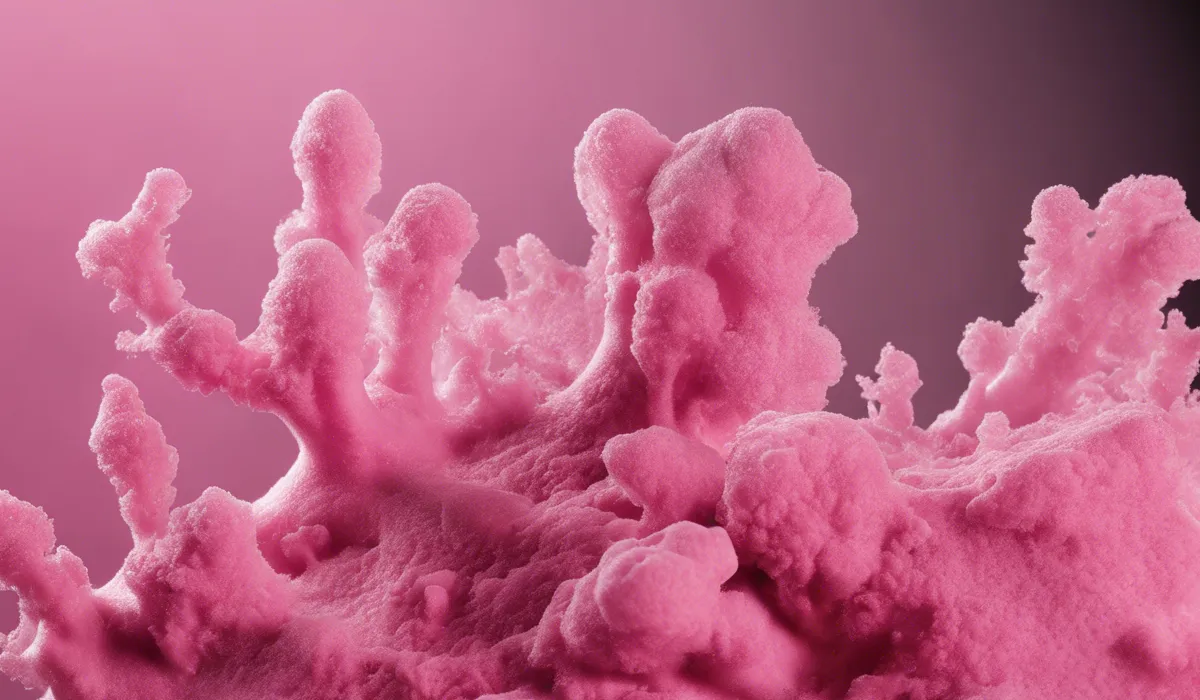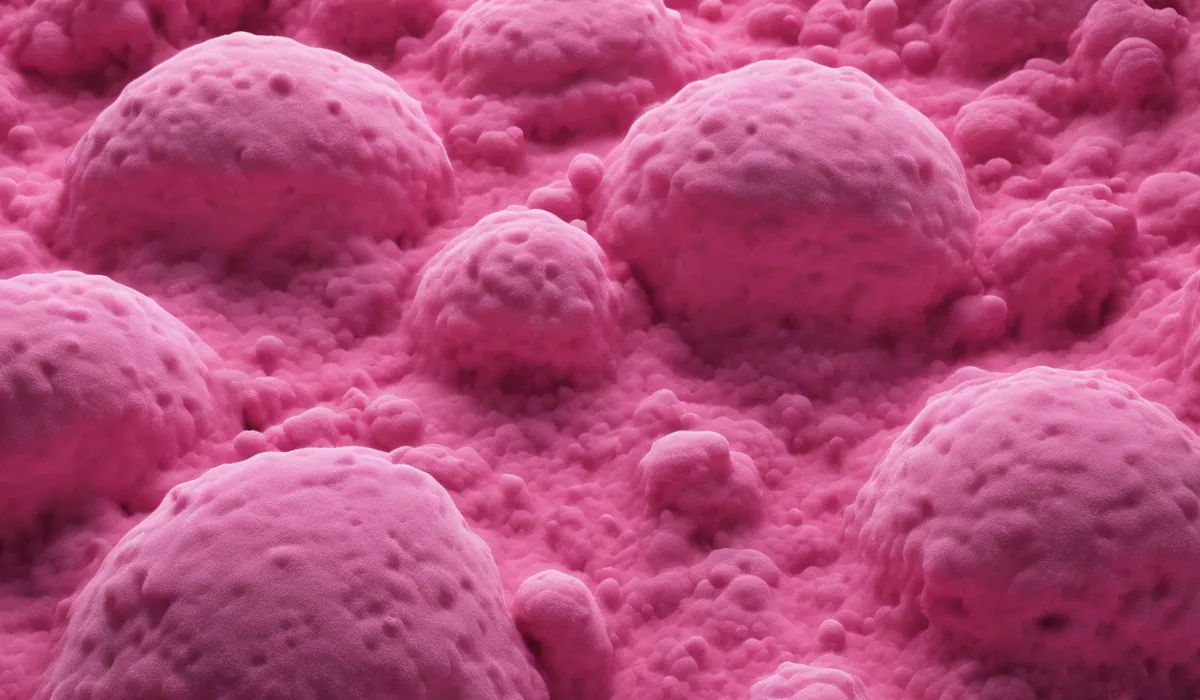Pink mold commonly originates from a bacterial species called Serratia marcescens. This bacterium thrives in moist, fatty environments like bathrooms and kitchens.
It feeds on soap residue, shampoo, and other organic materials found in these areas. Regular cleaning can help prevent its growth.
Understanding Pink Mold

What is Pink Mold?
Pink mold is a common name for a type of bacterial growth that often appears in moist environments.
Despite its name, pink mold is not actually a mold, but rather a bacterial colony. It is known for its distinctive pink or orange hue, which can make it stand out against the more common blacks and greens of true molds.
Debunking the Mold Myth
Many people mistake pink mold for a fungus due to the term ‘mold’ in its name. However, unlike molds that belong to the fungi kingdom, pink mold is a bacterium.
Understanding this difference is crucial in effectively treating and preventing its growth.
Introducing Serratia Marcescens
The bacterium responsible for pink mold is Serratia marcescens. This bacterium can be found in many environments but particularly thrives in damp areas where it has access to fatty substances like those found in soap and shampoo residues.
While it is not typically harmful, it can sometimes cause infections, particularly in hospital settings or among individuals with weakened immune systems.
Characteristics of Serratia Marcescens
Serratia marcescens is characterized by its ability to produce a red pigment at room temperature, which is why the colonies appear pink or reddish.
This pigment, called prodigiosin, is thought to be a defensive mechanism and contributes to the bacterium’s resilience in various environments.
Causes and Sources of Pink Mold

Role of Moisture and Humidity
Moisture and high humidity levels are prime factors for the growth of Serratia marcescens.
These conditions provide the perfect breeding ground for bacteria, allowing them to multiply rapidly. Areas with stagnant water or condensation are particularly susceptible.
Hotspots in the Home
Bathrooms and kitchens are the most common household locations for pink mold to develop.
These areas are often warm and humid and provide the organic materials that Serratia marcescens needs to thrive, such as soap scum and food residue.
Consequences of Poor Airflow
Lack of proper ventilation can exacerbate the problem of pink mold. Without adequate airflow to dry out damp areas, moisture persists, creating an ideal environment for bacterial growth. Ensuring good ventilation is therefore key in combating pink mold.
Organic Material as a Food Source
Pink mold feeds on the organic materials readily available in households, particularly in bathrooms and kitchens.
Soap residues, shampoo, and even body oils can serve as a food source for Serratia marcescens, helping it to colonize and spread.
Prevention and Remediation

Maintaining a Clean Environment
Regular cleaning is the first line of defense against pink mold. By keeping surfaces free of the organic materials that the bacteria feed on, you can greatly reduce the likelihood of its appearance.
Cleaning should focus on areas prone to moisture and organic buildup, such as shower curtains, tiles, and kitchen sinks.
Choosing the Right Cleaning Agents
Both natural and chemical cleaning agents can be effective against Serratia marcescens. Natural solutions like vinegar or baking soda can be used for regular maintenance, while stronger chemical agents may be required for more established colonies.
Controlling Moisture and Air Quality
Proper ventilation and moisture control are crucial in preventing pink mold. Using dehumidifiers, exhaust fans, and ensuring that areas are dried out after use can make a significant difference in controlling bacterial growth.
When to Call in the Professionals?
In cases of severe or persistent pink mold outbreaks, professional remediation may be necessary.
Experts can assess the situation, identify the underlying causes, and implement strategies to not only remove the existing bacteria but also prevent future growth.
FAQs About Pink Mold
What is pink mold and where does it come from?
Pink mold is typically a bacterial species known as Serratia marcescens that comes from moist environments with organic material, such as bathrooms and kitchens.
Why does pink mold appear in my bathroom?
Pink mold appears in bathrooms due to the presence of moisture, soap residue, and organic materials which provide a suitable environment for Serratia marcescens to thrive.
Can pink mold grow in my kitchen?
Yes, pink mold can grow in kitchens, especially on surfaces where there is soap residue, fatty substances, and sufficient moisture.
What does pink mold feed on?
Pink mold feeds on soap residue, shampoo, and other organic materials commonly found in bathrooms and kitchens.
How can I prevent the growth of pink mold in my home?
Regular cleaning of moist areas, reducing humidity, and removing soap scum and organic residues can help prevent the growth of pink mold.
Final Thoughts
Pink mold typically stems from the bacterium Serratia marcescens, which favors the damp and lipid-rich environments of bathrooms and kitchens.
It proliferates by consuming soap scum, shampoo, and other organic substances typically found in these areas. Maintaining a routine of regular cleaning is essential to deter its growth.
